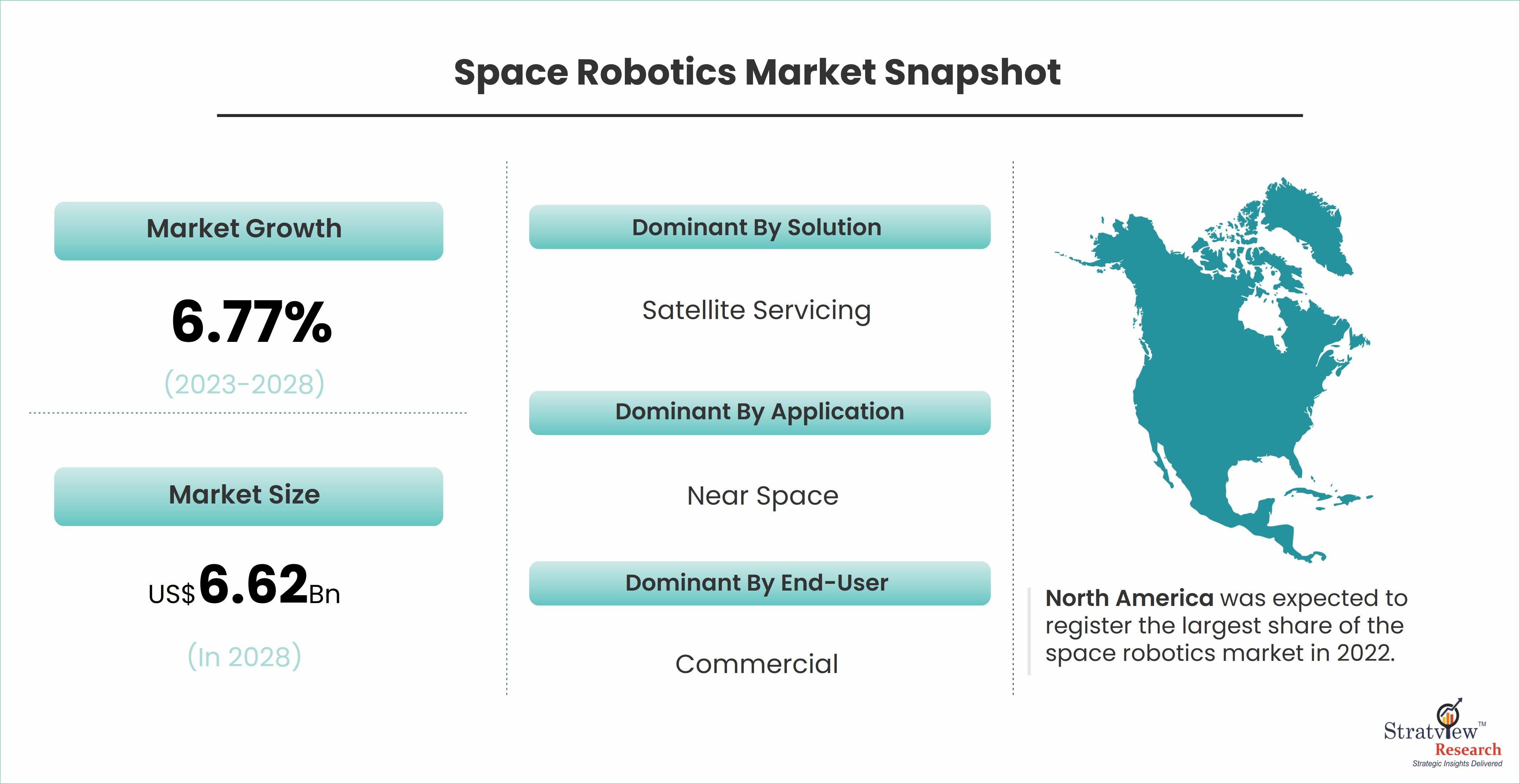According to Stratview Research, the space robotics market was estimated at USD 4.43 billion in 2022 and is likely to grow at a CAGR of 6.77% during 2023-2028 to reach USD 6.62 billion in 2028.
In the vast expanse of the cosmos, where humanity's curiosity knows no bounds, the role of space robotics is becoming increasingly prominent. As we venture beyond Earth, the utilization of robotic technology has become a critical factor in space exploration, satellite deployment, and even interplanetary missions. This article delves into the exciting frontier of the Space Robotics Market, exploring the current landscape, key players, and the unprecedented opportunities that lie ahead.
The Evolution of Space Robotics:
The dawn of space exploration saw the first use of robotic technology in the form of space probes and landers. However, the landscape has evolved significantly, with space agencies and private companies now deploying sophisticated robotic systems for a myriad of tasks. From satellite maintenance to planetary exploration, space robotics has become an indispensable part of our cosmic endeavors.
Key Players in the Space Robotics Sector:
NASA (National Aeronautics and Space Administration): As a pioneering force in space exploration, NASA has been at the forefront of developing and deploying advanced robotic systems for planetary exploration and satellite missions.
SpaceX: The private aerospace manufacturer founded by Elon Musk has played a pivotal role in revolutionizing space travel. SpaceX's robotic technology is integral to their reusable rocket systems and ambitious plans for Mars colonization.
ESA (European Space Agency): The ESA actively engages in space robotics for exploration, satellite deployment, and maintenance missions. Collaborative projects with other international agencies further solidify its position in the space robotics market.
Blue Origin: Founded by Amazon's Jeff Bezos, Blue Origin is making strides in space robotics, focusing on developing technologies for lunar exploration and beyond.
ISRO (Indian Space Research Organisation): India's space agency has also embraced space robotics, with successful missions involving robotic technology for satellite deployment and lunar exploration.
Applications of Space Robotics:
Planetary Exploration: Rovers like NASA's Curiosity and Perseverance have become synonymous with robotic exploration of other planets, providing valuable data and insights into the Martian landscape.
Satellite Servicing: The maintenance and repair of satellites in orbit, often carried out by robotic arms or drones, extend the lifespan and functionality of crucial space infrastructure.
Space Debris Removal: With the increasing amount of space debris in Earth's orbit, space robotics is being utilized to develop solutions for debris removal and mitigation.
Interplanetary Mining: Futuristic missions envision the use of robotic technology for mining resources on celestial bodies, supporting human presence and sustainability in space.
Opportunities on the Horizon:
Commercial Space Exploration: The rise of private companies entering the space industry opens up new opportunities for the development and deployment of advanced space robotic systems.
International Collaboration: Collaborative efforts between space agencies and private enterprises are fostering innovation and pushing the boundaries of what space robotics can achieve.
Advancements in AI and Autonomy: Artificial intelligence and autonomous capabilities are enhancing the decision-making and operational efficiency of space robotics, enabling more complex missions.
Challenges and Future Prospects:
While the space robotics market holds tremendous promise, challenges such as the high cost of development, the need for advanced propulsion systems, and the complexity of robotic operations in space persist. However, the collective efforts of scientists, engineers, and space enthusiasts worldwide are driving the industry towards overcoming these challenges and reaching new heights in the cosmic frontier.
Conclusion:
As we venture "Beyond Earth," the space robotics market stands as a testament to humanity's ingenuity and determination to explore the cosmos. With each robotic mission, we navigate the uncharted territories of space, unlocking the mysteries of our universe. As technology continues to evolve and international collaboration flourishes, the frontier of the space robotics market promises not only scientific discoveries but also unprecedented opportunities for human expansion and coexistence in the vastness of space.
